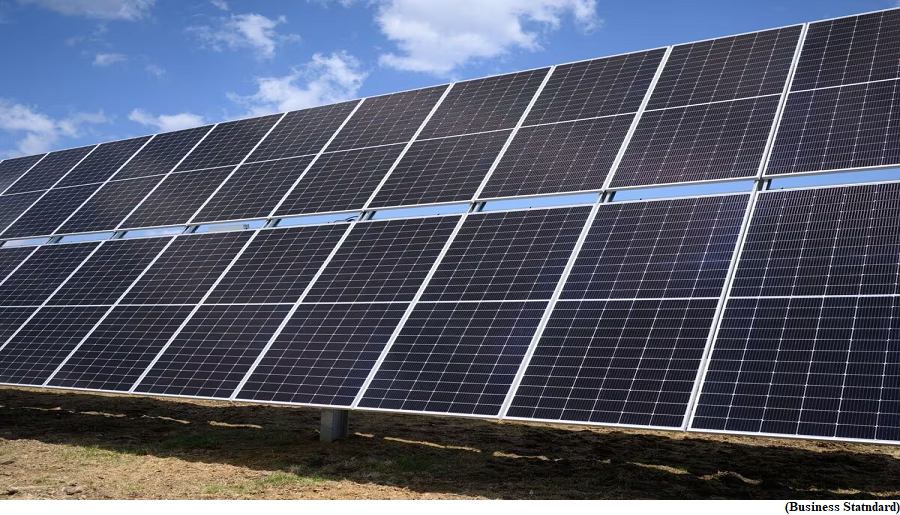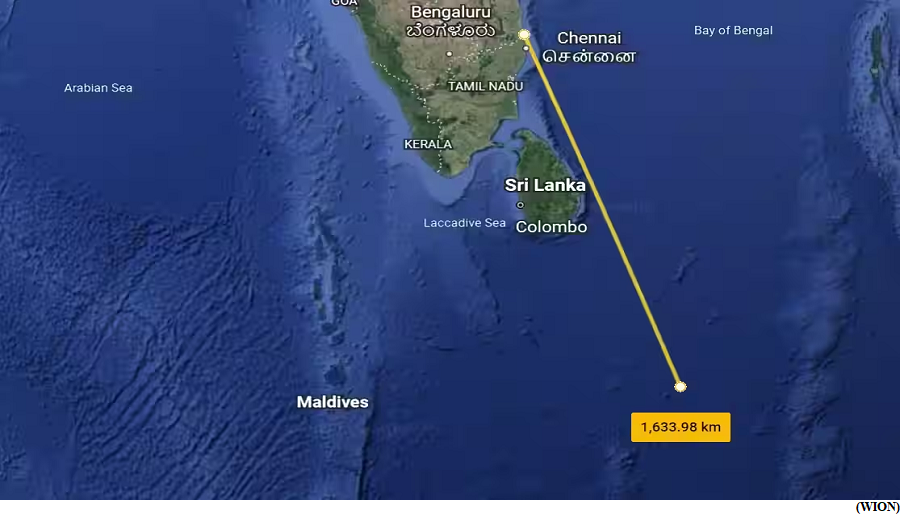SJVN commissions its 100 MW Raghanesda Solar Power Station in Gujarat (GS Paper 3, Energy)

Why in news?
- SJVN Limited has recently commissioned its 100 MW Raghanesda Solar Power Station located in district Banaskatha, Gujarat.
Details:
- The project will generate 252 million units of energy in the first year while the cumulative energy generation over a period of 25 years is estimated to be 5,805 million units.
- Under a long-term Power Purchase Agreement signed in January 2022, the power generated by the Raghanesda Solar Power Station will be supplied to Gujarat Urja Vikas Nigam Limited (GUVNL) for 25 years.
- With the addition of this project, SJVN's installed capacity becomes 2,377 MW. This milestone marks the commissioning of SJVN's second solar project, following the commissioning of 50 MW Gujrai Solar Power Station in Uttar Pradesh.
Green Program:
- SJVN Green Energy Limited, the renewable arm of SJVN Limited, had secured the 100 MW Raghanesda Solar Power Station at a tariff of Rs. 2.64 per unit through Tariff Based Competitive Bidding conducted by GUVNL. The construction and development cost of the project is Rs. 642 crores.
- SJVN had secured the financing for the project from Japan Bank for International Cooperation under Global action for Reconciling Economic growth and Environmental preservation (GREEN) program, reinforcing its dedication to green initiatives and responsible growth.
- The project will make significant contribution to the Renewable Energy Goals of the state of Gujarat and will also contribute in fostering energy security in the region.
About SJVN Limited:
- SJVN Limited, a Mini Ratna- Category-I and Schedule - ’A’ Central Public Sector Enterprise under the administrative control of the Ministry of Power, Government of India, commenced its journey on May 24, 1988 as a joint venture of the Government of India and the Government of Himachal Pradesh.
- A listed entity, SJVN has 55% of its shares held by the Government of India, 26.85% by the Government of Himachal Pradesh and the remaining 18.15% by the public.
- SJVN has diversified into almost all forms of energy i.e. Hydro, Thermal, Wind, Solar, Power trading and Transmission.
- Looking ahead, SJVN aims to grow by setting ambitious targets to achieve the Shared Vision of 25,000 MW installed capacity by the year 2030 and 50,000 MW installed capacity by the year 2040.
India second spaceport in Tamil Nadu
(GS Paper 3, Science and Technology)
Why in news?
- Recently, the Prime Minister Narendra Modi laid the foundation stone for the Indian Space Research Organisation's (ISRO) second spaceport in Kulasekarapattinam, Tamil Nadu.
- The new proposed spaceport is over 700 kilometres away from the Indian Space Research Organisation's (ISRO) Sriharikota launch facility and is being developed to launch smaller satellites to Low Earth Orbit (LEO).

Details:
- The new spaceport, sprawling over 2,233 acres in the villages of Padukkapathu, Pallakurichi, and Mathavankurichi in Kulasekarapattinam and Sathankulam taluks, is expected to be operational in two years.
- It will complement the existing spaceport in Sriharikota, Andhra Pradesh, and is strategically positioned to offer geographical advantages that promise fuel savings and more efficient satellite launches.
- The Tamil Nadu government has completed the land acquisition for this project, which comes at a time when the Centre has opened up the space sector to 100% Foreign Direct Investment (FDI).
- To further leverage this new facility, the state is also setting up a Space Industrial and Propellants Park across 2,000 acres in the district, aiming to create a vibrant ecosystem for space industry players in the region.
Why Sriharikota?
- Since its establishment in the late 1970s, the Satish Dhawan Space Centre (SDSC) in Sriharikota has been pivotal in executing numerous launches, making it a cornerstone for India's space missions.
- Sriharikota's location on India's East Coast is not just a matter of geographical convenience but a strategic choice that significantly enhances the efficiency of rocket launches.
Proximity to the equator:
- Its proximity to the equator is particularly advantageous. The Earth's rotation from west to east is fastest at the equator, providing rockets launched from this location with an additional push.
- This natural boost, courtesy of the Earth's rotational velocity, allows for a reduction in the fuel required for the rocket to achieve orbit. Consequently, this increases the capacity for payloads, making launches more efficient and cost-effective.
- This feature makes Sriharikota particularly well-suited for missions targeting equatorial orbits, which are orbits aligned with the Earth's equator. Such orbits are commonly used for communication and weather satellites, as they provide optimal coverage of the Earth's surface.
Proximity to the sea:
- Sriharikota's proximity to the sea is another advantageous factor. Launching rockets over water minimises risks to populated areas in the event of malfunctions or accidents.
- In the event of a mishap during launch or ascent, rockets and their debris fall harmlessly into the ocean, reducing the likelihood of damage to property or harm to people on the ground.
- Also, this helps in discarding the spent initial stages of the launch vehicles safely away from populated areas.
Why ISRO needs a new spaceport?
- As India expands its space endeavours, additional launch infrastructure becomes apparent. This is even more relevant, particularly for accommodating smaller rockets with smaller payloads (a few hundred kgs) and missions requiring polar orbits.
- While Sriharikota excels at launching heavier rockets, it presents challenges for launch vehicles, such as the Polar Satellite Launch Vehicle (PSLV) and the newly inducted Small Satellite Launch Vehicle (SSLV) designed to deploy 500 kg satellites.
- Also, when launching rockets into polar orbits from Sriharikota, the trajectories necessitate flying over Sri Lanka, posing safety concerns.
Fuel-intensive manoeuvres:
- To address these issues, rockets execute fuel-intensive manoeuvres to diminish payload capacity for smaller rockets like SSLV. This technique, known as "dog-legging," involves altering the rocket's trajectory mid-flight to avoid geopolitical obstacles.
- Additionally, the direction in which a spacecraft is launched, called the azimuth, is essential for determining its orbit.
- For example, GSLV launches at an azimuth between 104 degrees and 107 degrees, allowing it to follow a path over the Bay of Bengal.
- On the other hand, PSLV launches at an azimuth of 140 degrees or more for polar satellites, requiring a slight change in direction to avoid flying over Sri Lanka.
Way Forward:
- With Kulasekarapattinam as India's second spaceport, these challenges are set to be addressed. The strategic selection of this location leverages the rotational direction of Earth, facilitating more fuel-efficient launches.
- Additionally, its coastal positioning minimises the risk of launch vehicle debris impacting inhabited areas, thus enhancing safety protocols.
- This development is not merely an expansion of India's capacity for space launches but also a pivotal move towards capturing a larger share of the global spacecraft launch market.



